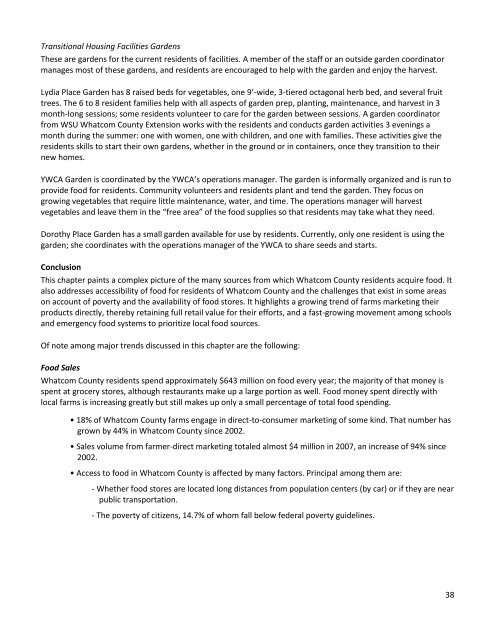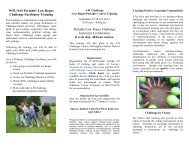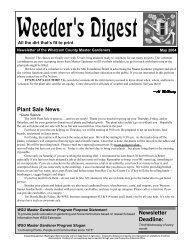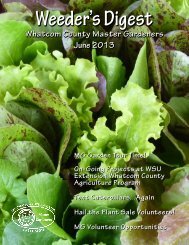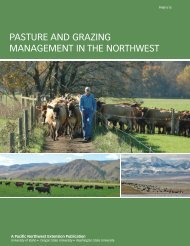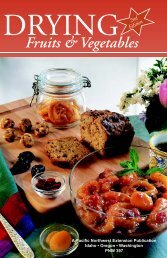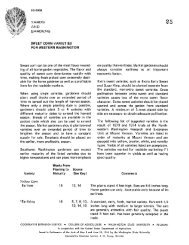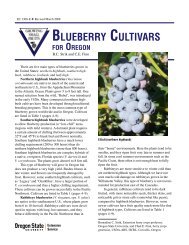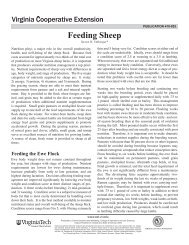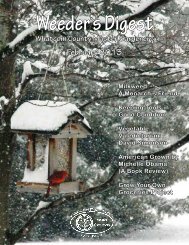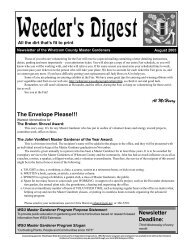Where Does Whatcom County Get its Food? - WSU Whatcom ...
Where Does Whatcom County Get its Food? - WSU Whatcom ...
Where Does Whatcom County Get its Food? - WSU Whatcom ...
Create successful ePaper yourself
Turn your PDF publications into a flip-book with our unique Google optimized e-Paper software.
Transitional Housing Facilities Gardens<br />
These are gardens for the current residents of facilities. A member of the staff or an outside garden coordinator<br />
manages most of these gardens, and residents are encouraged to help with the garden and enjoy the harvest.<br />
Lydia Place Garden has 8 raised beds for vegetables, one 9’-wide, 3-tiered octagonal herb bed, and several fruit<br />
trees. The 6 to 8 resident families help with all aspects of garden prep, planting, maintenance, and harvest in 3<br />
month-long sessions; some residents volunteer to care for the garden between sessions. A garden coordinator<br />
from <strong>WSU</strong> <strong>Whatcom</strong> <strong>County</strong> Extension works with the residents and conducts garden activities 3 evenings a<br />
month during the summer: one with women, one with children, and one with families. These activities give the<br />
residents skills to start their own gardens, whether in the ground or in containers, once they transition to their<br />
new homes.<br />
YWCA Garden is coordinated by the YWCA’s operations manager. The garden is informally organized and is run to<br />
provide food for residents. Community volunteers and residents plant and tend the garden. They focus on<br />
growing vegetables that require little maintenance, water, and time. The operations manager will harvest<br />
vegetables and leave them in the “free area” of the food supplies so that residents may take what they need.<br />
Dorothy Place Garden has a small garden available for use by residents. Currently, only one resident is using the<br />
garden; she coordinates with the operations manager of the YWCA to share seeds and starts.<br />
Conclusion<br />
This chapter paints a complex picture of the many sources from which <strong>Whatcom</strong> <strong>County</strong> residents acquire food. It<br />
also addresses accessibility of food for residents of <strong>Whatcom</strong> <strong>County</strong> and the challenges that exist in some areas<br />
on account of poverty and the availability of food stores. It highlights a growing trend of farms marketing their<br />
products directly, thereby retaining full retail value for their efforts, and a fast-growing movement among schools<br />
and emergency food systems to prioritize local food sources.<br />
Of note among major trends discussed in this chapter are the following:<br />
<strong>Food</strong> Sales<br />
<strong>Whatcom</strong> <strong>County</strong> residents spend approximately $643 million on food every year; the majority of that money is<br />
spent at grocery stores, although restaurants make up a large portion as well. <strong>Food</strong> money spent directly with<br />
local farms is increasing greatly but still makes up only a small percentage of total food spending.<br />
• 18% of <strong>Whatcom</strong> <strong>County</strong> farms engage in direct-to-consumer marketing of some kind. That number has<br />
grown by 44% in <strong>Whatcom</strong> <strong>County</strong> since 2002.<br />
• Sales volume from farmer-direct marketing totaled almost $4 million in 2007, an increase of 94% since<br />
2002.<br />
• Access to food in <strong>Whatcom</strong> <strong>County</strong> is affected by many factors. Principal among them are:<br />
- Whether food stores are located long distances from population centers (by car) or if they are near<br />
public transportation.<br />
- The poverty of citizens, 14.7% of whom fall below federal poverty guidelines.<br />
38


